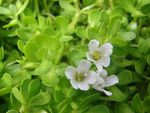Shatavari offers a multitude of benefits, from reproductive health to boosting immunity.
In honor of Women’s Health Week, I am excited to teach about a special Ayurvedic herb for women, called Shatavari. This herb is part of the asparagus family, and is known in Latin as asparagus racemosus.
In Sanskrit, “Shatavari” translates to “100 spouses” — signaling the powerful reproductive properties of the herb. Like ashwagandha, it is also an adaptogenic herb, which means it may increase your ability to withstand physical and psychological stress.
Shatavari can be extremely beneficial for women's reproductive health throughout all stages of their life. Research demonstrates that Shatavari roots can help promote the production of breast milk in lactating women, and support overall immunity.
Another study evaluated the safety and efficacy of this herb and found it to be helpful in reducing menopausal symptoms, such as hot flashes and night sweats, in otherwise healthy women. It is also believed in the Ayurvedic world to have antidepressant qualities for the mind.
"Shatavari may increase your ability to withstand physical and psychological stress."
In Ayurvedic medicine, Shatavari is known as a Rasayana, or rejuvenating, immunity-building herb. A relatively healthy person can receive Rasayana herbs to maintain and build their health even further and to prevent disease.
In the case of Shatavari, healthy women can take it safely along with food, provided you can easily eliminate your bowels daily (ideally in the morning) and are not experiencing digestive, respiratory or other health conditions. (If you are, there are other Ayurvedic therapies can help you have daily eliminations — then you may be able to add Shatavari into your diet.)
Note: I always recommend seeing an Ayurvedic practitioner before you begin using Ayurvedic herbs like Shatavari, especially if you have a combination of different health and wellness concerns.
As the Director of Ayurveda at THE WELL, I offer 60-minute Ayurvedic consultations, where I can provide personalized guidance. (Find details and book here. I also offer 15-minute complimentary consultations, where you can learn more about what you can expect from a full consultation.
How to Add Shatavari to Your Routine
Shatavari can be taken throughout various stages in a woman's life cycle — from childhood to pregnancy and breastfeeding and beyond.
For Children: Shatavari "Doughnut Balls"
In childhood, you can give girls who are relatively healthy a Shatavari laddoo (which is like an Ayurvedic doughnut ball). To make this treat, combine dates, raisins and figs in a food processor, then add in Shatavari in a ratio of four to one (meaning, if you make a one cup of a mixture of dates, raisins and figs, then mix in 1/4 cup of Shatavari). Take the mixture and make balls the size of a mini-doughnut hole. The stickiness of all the foods will help bind together the Shatavari powder. Girls can eat one or two of these balls every day as a healthy snack alternative.
For Young and Pregnant Women: Shatavari Milk
A Shatavari milk recipe can be prepared for young women once they reach puberty by mixing 1/2 teaspoon of Shatavari powder into 1 cup of milk (from well-treated cows, if you have access to cow shares directly from farms, or you can use plant-based milks). You can also include 1/4 teaspoon cardamom powder, 1/4 teaspoon turmeric and coconut sugar or other sugar substitute to taste in this.
Boil all ingredients together with the milk. Once the milk has cooled down to warm, enjoy as a breakfast substitute or right before bedtime (ideally three hours after your last meal of the day).
Sexually active women can follow the same recipe, but include 2 tablespoons of Shatavari to keep the reproductive organs strong. Pregnant women can follow the same recipe, except they can add up to 4 tablespoons of Shatavari to milk.
For Older Women: Shatavari Milk or Water
Older women can take the same milk with 1 tablespoon Shatavari powder. Or take 1/2 teaspoon of Shatavari as a supplement with warm water to derive its rejuvenating, anti-aging and strengthening health benefits.
For Red, Inflamed Skin
Mix 1/2 teaspoon of Shatavari powder with 1/2 teaspoon hibiscus leaf powder. Add enough water to create a paste that you can apply to soothe skin that is red and inflamed with rashes, acne or rosacea.
For Dry or Aging Skin
Make a therapeutic face mask by mixing 1 teaspoon of Shatavari powder with 1 tablespoon of ghee (clarified butter) and apply to your skin. This home remedy can help treat dryness, fine lines, wrinkles and tired-looking eyes.




